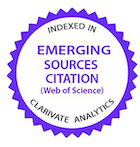AN ALTERNATIVE METHODOLOGY OF DETERMINING FEED SORTING IN TRANSITION DAIRY COWS FED GLYCEROL
DOI:
https://doi.org/10.5216/cab.v11i4.9698Keywords:
Animal NutritionAbstract
The objective of this study was to compare the standard methodology with an alternative method to determine feed sorting in dairy cows during the transition period. Twenty-six Holstein multiparous cows were paired by expected calving date and fed diets containing either glycerol or high moisture corn from -28 through +56 days relative to calving (DRTC). Feed sorting was determined on -16, -9, +9, +15 and +51 DRTC in two different ways. Firstly, it was determined as the actual intake of each screen of the Penn State Particle Separator (PSPS) consumed between 0-4, 4-8, 8-12 and 12-24 hours post feeding, and expressed as a percentage of the predicted intake of that correspondent screen. Secondly, by measuring the particle size distribution of feed consumed between 0-4, 4-8, 8-12 and 12-24 hours post feeding. The total mixed ration (TMR) at feeding and at each time post feeding was separated by size using the 3-screen (19, 8, and 1.18 mm) Penn State Particle Separator (PSPS) to yield long (>19 mm), medium (<19, >8 mm), short (<8, >1.18 mm), and fine particles (<1.18 mm), respectively. Adding glycerol to the prepartum diet increased (P<0.05) the proportion of DM% retained as long particles (>19 mm) and reduced (P<0.05) the proportion of DM% retained as short (<8, >1.18 mm) and fine particles (<1.18 mm), but it did not alter (P>0.05) the proportion of DM% retained as medium particles (<19, >8 mm). Cows fed prepartum glycerol increased (P<0.05) the preference for long particles (>19 mm) according to the standard methodology (77.2 vs. 101.5%, control vs. glycerol) and also in the alternative methodology (9.2 vs. 17.8%, control vs. glycerol). Cows fed prepartum glycerol discriminated against (P<0.05) short particles (<8, >1.18 mm) in the standard methodology (102.6 vs. 94.2%, control vs. glycerol) as well as in the alternative methodology (42 vs. 37.3%, control vs. glycerol). There was no response (P>0.05) of diet on feed sorting of fine particles (<1.18 mm) according to standard methodology during the prepartum interval, but cows fed prepartum glycerol decreased (P<0.05) the preference for fine particles (<1.18 mm) in the alternative methodology (17.9 vs. 13.6%, control vs. glycerol). Cows fed postpartum glycerol increased (P<0.05) the preference for medium particles (<19, >8 mm) according to the standard methodology (108.6 vs. 116.5%, control vs. glycerol), but did not (P>0.05) according to the alternative methodology. Cows fed postpartum glycerol discriminated against (P<0.05) short particles (<8, >1.18 mm) according to the standard methodology (100.6 vs. 96.6%, control vs. glycerol), but did not (P>0.05) according to the alternative methodology. Feeding prepartum glycerol to transition dairy cows increases the preference for the long-stem forage particles of the diet. The alternative methodology proposed in this study is more reliable than the standard methodology to determine feed sorting.KEYWORDS: Biodiesel, byproduct, particle size, preference.
Downloads
Download data is not yet available.
Published
2010-12-21
How to Cite
CARVALHO, Eduardo Rodrigues de; LIMA, Milton Luiz Moreira; FRANÇA, Aldi Fernandes de Souza; FERNANDES, Juliano José de Resende; WHITE, Heather Muse; DONKIN, Shawn Scott. AN ALTERNATIVE METHODOLOGY OF DETERMINING FEED SORTING IN TRANSITION DAIRY COWS FED GLYCEROL. Brazilian Animal Science/ Ciência Animal Brasileira, Goiânia, v. 11, n. 4, p. 825–834, 2010. DOI: 10.5216/cab.v11i4.9698. Disponível em: https://revistas.ufg.br/vet/article/view/9698. Acesso em: 6 dec. 2025.
Issue
Section
Animal Production
License
Copyright (c) 2010 Brazilian Animal Science/ Ciência Animal Brasileira

This work is licensed under a Creative Commons Attribution 4.0 International License.
Authors who publish with this journal agree to the following terms:
- Authors retain copyright and grant the journal right of first publication with the work simultaneously licensed under a Creative Commons Attribution License that allows others to share the work with an acknowledgement of the work's authorship and initial publication in this journal.
- Authors are able to enter into separate, additional contractual arrangements for the non-exclusive distribution of the journal's published version of the work (e.g., post it to an institutional repository or publish it in a book), with an acknowledgement of its initial publication in this journal.
- Authors are permitted and encouraged to post their work online (e.g. in institutional repositories or on their website) prior to and during the submission process, as it can lead to productive exchanges, as well as earlier and greater citation of published work (See The Effect of Open Access).































